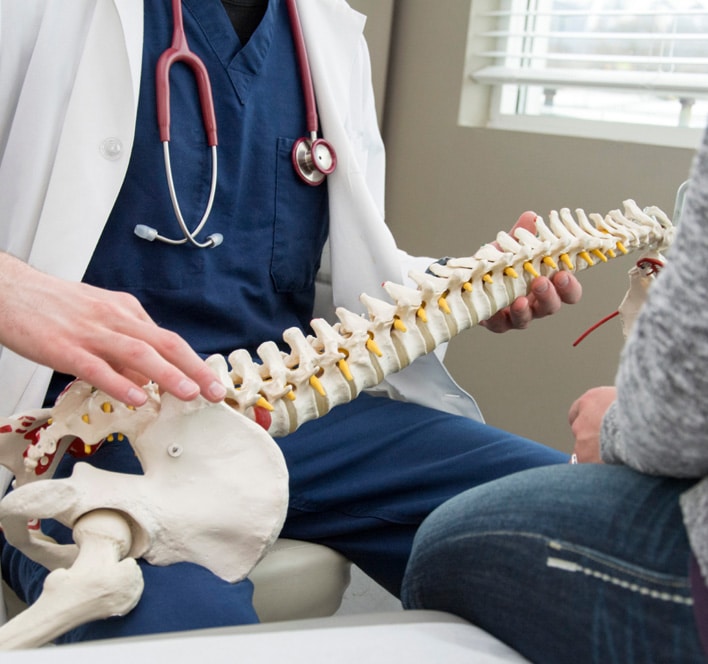A healthy and happy spine connects, protects, and supports the body and internal organs. Spinal instability, also known as lumbar instability, is when the spinal column cannot maintain its normal configuration under normal conditions. When your spine cannot hold together the ligaments, discs, muscles, and bones, your body will slowly lose its ability to perform essential functions.
With an unstable spine, your health and lifestyle are at serious risk. Enjoying time with family, performing work tasks, and simply walking around the house can be challenging with an unstable spine. There are several reasons why spinal instability occurs. To receive an accurate diagnosis, speak with a board-certified orthopedic specialist.
Causes of Spinal Instability
The spine is a collection of bones, muscles, and nerves all working together to keep the structure of your body. With multiple sections of the spine in charge of different functions, the injuries and severity of the instability depend on the location. There are several causes of instability in the spine, including:
- Age-related degeneration
- External trauma or fracture of the spine
- Metastatic tumors in the spine
- Scoliosis
- Spondylolisthesis
- Congenital defects in the spinal cord
- Poor lifting techniques
- Disorders of the connective tissues
- Degenerative Disc Disease
While some of the causes result from injuries and activities, age and trauma are serious factors in spinal instability. Discuss with your doctor the cause of your spine’s instability and how we may be able to treat your condition and provide you with life-changing pain relief.
Treatment Options for Spinal Instability
An orthopedic specialist will observe measurable factors and symptoms to determine how your spine is functioning and its health. Once they’ve come to an objective answer and determined your spine’s instability, they will discuss your options for relieving pain and recovering your spine’s stability.
Below are a few of the many treatment options available to you:
- Anti-inflammatory medicines and medical-grade painkillers
- Physical therapy and muscle-strengthening exercises
- Microdiscectomy
- Spinal Fusion
Over-exertion, strain, sudden movements, and staying in one continuous position may gradually deteriorate the lumbar muscles and produce unhealthy habits that progress the disease. After your doctor evaluates your condition and provides a diagnosis, you can discuss your next steps and path to recovery.
When to Speak With an Orthopedic Specialist
While many may dismiss back pain as simply aches and pains, there’s often an underlying reason for severe back and spine pain. In some cases, you may feel tingling and numbness throughout your arms or legs, have difficulty controlling your bowel movements, and suffer from severe stiffness. Your orthopedic specialist will be able to communicate your diagnosis, answer any questions about your condition, and provide you with treatment options that fit your needs. When you start feeling extreme pain or any of the issues mentioned above, contact an orthopedic specialist.
Contact NJ Spine & Orthopedic for Board-Certified Orthopedic Specialists
Spinal instability impacts your health, well-being, and causes severe pain. Don’t wait for your condition to become unbearable before contacting our NJ Spine & Orthopedic team. We understand the challenges you face with extreme back pain and will provide you with treatment options and a thorough evaluation of your condition. Our board-certified orthopedic specialists have advanced training and can provide the treatment you need for a smooth recovery and a pain-free life.
Speak with one of our team members about your pain by calling (866) 553-0612 or filling out our contact form.

